Source control and Git keeps getting more and more important for both Developers and Operations guys. Getting up and running with Git on MacOS or Linux is very easy as most things are built in. There are also cool tools like oh-my-zsh to customize your prompt.
On Windows, it’s a bit of a different story. Let’s spend a little time installing ConEmu and Git, then customizing it to take our prompt from something that looks like this:
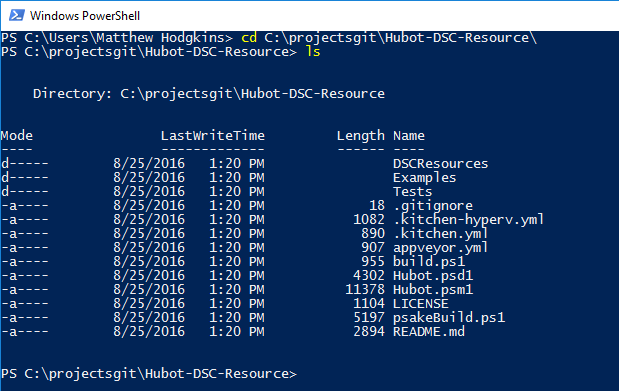
to this:
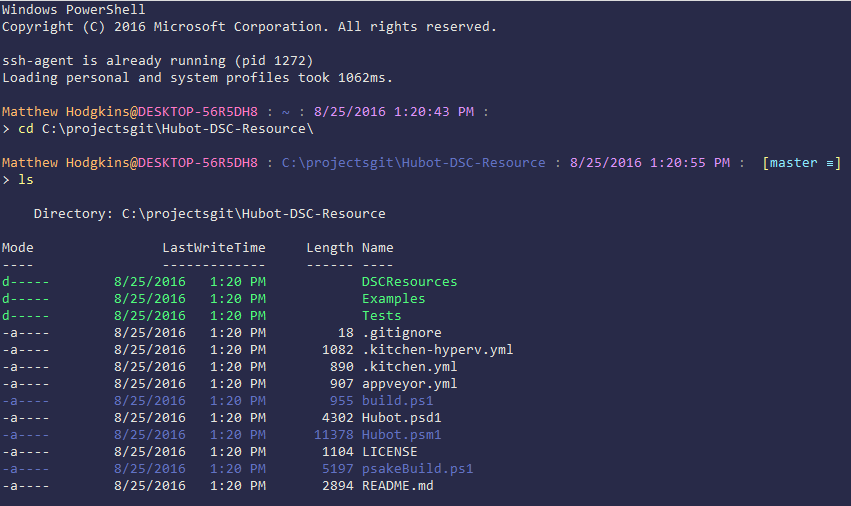
By the end of the article you will have a great looking prompt, a nice Git setup using ssh keys and even be able to squash commits on Windows.
📢 Want to be notified when I post more like this? Follow me on Twitter: @MattHodge 📢
Install required components
We will be installing the following tools for our ultimate git setup:
Chocolatey- a Windows package manager- Chocolatey Packages
git.install- Git for WindowsConEmu- Terminal Emulator for Windows
- PowerShell Modules
posh-git- PowerShell functions for working with Git
Open an Administrative PowerShell prompt and enter the following:
# Set your PowerShell execution policy
Set-ExecutionPolicy -ExecutionPolicy RemoteSigned -Force
# Install Chocolatey
iwr https://chocolatey.org/install.ps1 -UseBasicParsing | iex
# Install Chocolatey packages
choco install git.install -y
choco install conemu -y
# Install PowerShell modules
Install-PackageProvider NuGet -MinimumVersion '2.8.5.201' -Force
Set-PSRepository -Name PSGallery -InstallationPolicy Trusted
Install-Module -Name 'posh-git'Close out of your PowerShell window.
ConEmu
Open up ConEmu. I like to use this instead of the standard PowerShell prompt.
On the first launch of ConEmu, you will be prompted with a fast configuration dialog. Click OK and continue. We will customize it manually.
Open up the settings menu and configure the below settings.
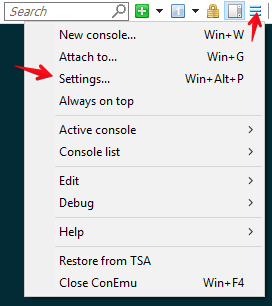
Enable single instance mode
Prevent multiple copies of ConEmu starting. Use the tabs instead!

Enable Quake mode
This is a cool one, it makes ConEmu slide down from the top of your screen like the Quake terminal used to.
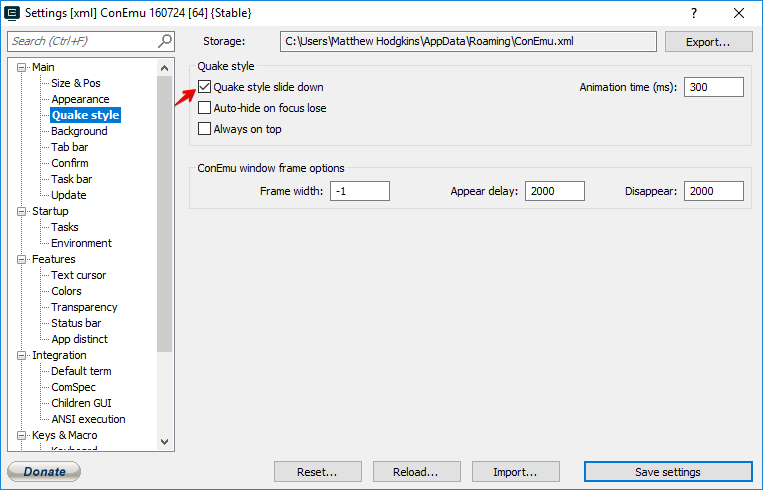
Set PowerShell as the default shell
Who uses cmd anymore? Set the default shell to PowerShell.

Verify Quake mode hotkey
Get the most out of Quake Mode by setting a hotkey.
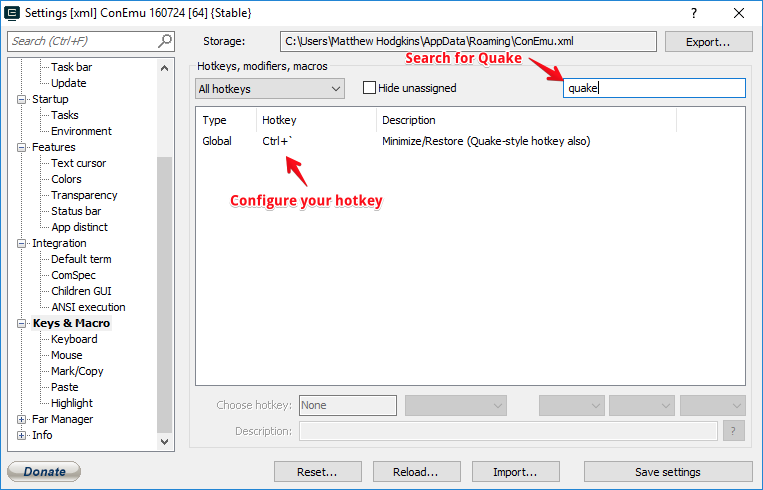
Set a custom color scheme
You can customize ConEmu you a color scheme. Check out the ConEmu Theme GitHub Repo. My terminal example above is using the Dracula theme.
PowerShell Profile
We have a nice terminal theme, but let’s do a few finishing touches to make it pop.
Create and edit the PowerShell Profile
PowerShell can load some settings every time it starts, which is known as the PowerShell Profile or $PROFILE.
To create/edit your $PROFILE do the following:
# Creates profile if doesn't exist then edits it
if (!(Test-Path -Path $PROFILE)){ New-Item -Path $PROFILE -ItemType File } ; ise $PROFILEThis will launch the PowerShell ISE so you can edit the profile.
posh-git and Ssh-Agent
The first thing to do inside your PowerShell Profile is to import the posh-git module. Next, you should add the Start-SshAgent command. ssh-agent will manage our keys for us.
Add the following to your $PROFILE
Import-Module -Name posh-git
Start-SshAgentThis will give us some functionality when working with Git repos.
Customize the prompt
Let’s make our prompt a little cooler and customize it a little.
I like the prompt that Joon Ro created over at his blog. I modified it slightly:
Colorize your directory listing
When we do a ls or dir wouldn’t it be nice to be able to colorize folders or certain file types instead of just having a boring list that looks the same?
Check out the Get-ChildItem-Color repository. I added the contents of Get-ChildItem-Color.ps1 to my $PROFILE.
I then overwrote both the ls and dir aliases by adding the following into my $PROFILE:
Set-Alias ls Get-ChildItem-Color -option AllScope -Force
Set-Alias dir Get-ChildItem-Color -option AllScope -ForceGit
Now we have a nice terminal to work with, let’s get Git setup.
Open up ConEmu.
Add C:\Program Files\Git\usr\bin to Path Variable
First up we need to add the C:\Program Files\Git\usr\bin folder to our path variable. This folder contains ssh-add and ssh-agent which we will be using to manage our SSH keys.
# Permanently add C:\Program Files\Git\usr\bin to machine Path variable
[Environment]::SetEnvironmentVariable("Path", $env:Path + ";C:\Program Files\Git\usr\bin", "Machine")Restart ConEmu for it to take effect.
Generate a key
Let’s generate our ssh key.
# Generate the key and put into the your user profile .ssh directory
ssh-keygen -t rsa -b 4096 -C "[email protected]" -f $env:USERPROFILE\.ssh\id_rsaAdd the public key to GitHub
Once we have a generated SSH Key, we need to give GitHub the public key.
# Copy the public key. Be sure to copy the .pub for the public key
Get-Content $env:USERPROFILE\.ssh\id_rsa.pub | clipOpen up your GitHub settings and choose SSH and GPG keys on the left.
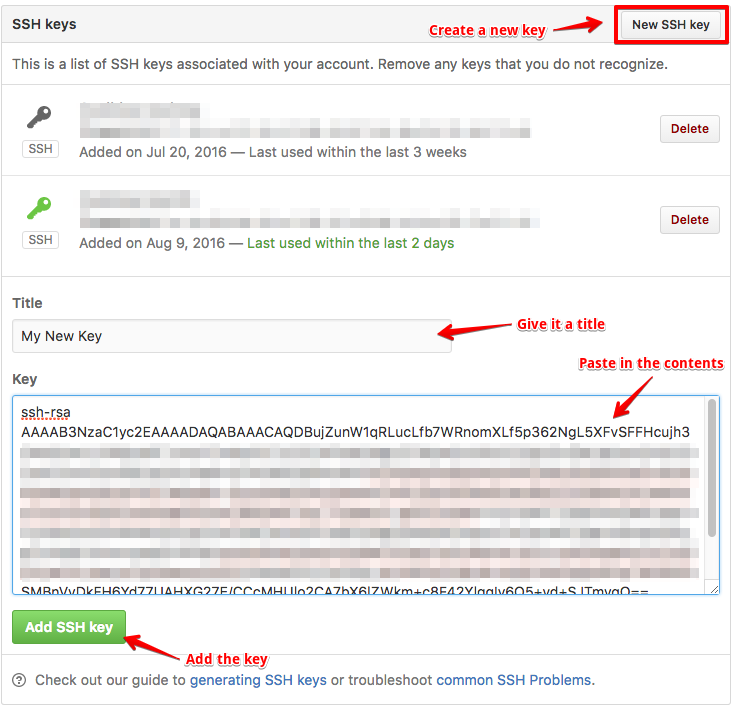
This process is similar for BitBucket.
Add our key to ssh-agent
When we try and push to our git repository, our machine will need to authenticate us using our SSH Key. A tool called ssh-agent keeps track of the keys we have and authenticating against GitHub for us.
With Start-SshAgent added to our profile, when you open up a new PowerShell prompt (or tab in ConEmu), ssh-agent will notice the id_rsa.pub in our $env:USERPROFILE\.ssh directory and attempt to load it:

If you don’t see this prompt you, ssh-agent had probably started before the ssh key existed, try stopping and starting it:
Stop-SshAgent
Start-SshAgentYou can also manually add a key to ssh-agent:
Add-SshKey $env:USERPROFILE\.ssh\id_rsaTo view the keys that ssh-agent knows about, you can list them:
# List ssh keys
ssh-add -lIf you wanted to remove your keys from ssh-agent for some reason:
# Remove all ssh keys
ssh-add -DTest authentication to GitHub
To test that your ssh key is working, you can run the following command:
# Test ssh connection to GitHub
ssh -T git@github.com
Configure global Git settings
Finally, we can configure some global Git settings:
git config --global user.email "[email protected]"
git config --global user.name "Your Name"
git config --global push.default simple
git config --global core.ignorecase false
# Configure line endings for windows
git config --global core.autocrlf trueSquash commits
Do you commit a little too often? Me too. It’s all good and well until we go and make a pull request on someone else’s repository and they are a little anal about keeping the Git history clean. Maybe you just feel embarrassed at the amount of commits you do and want to cover your tracks.
To fix this, we can “squash” our commits down so they just appear as one.
Here is what a pull request looks like with several commits:
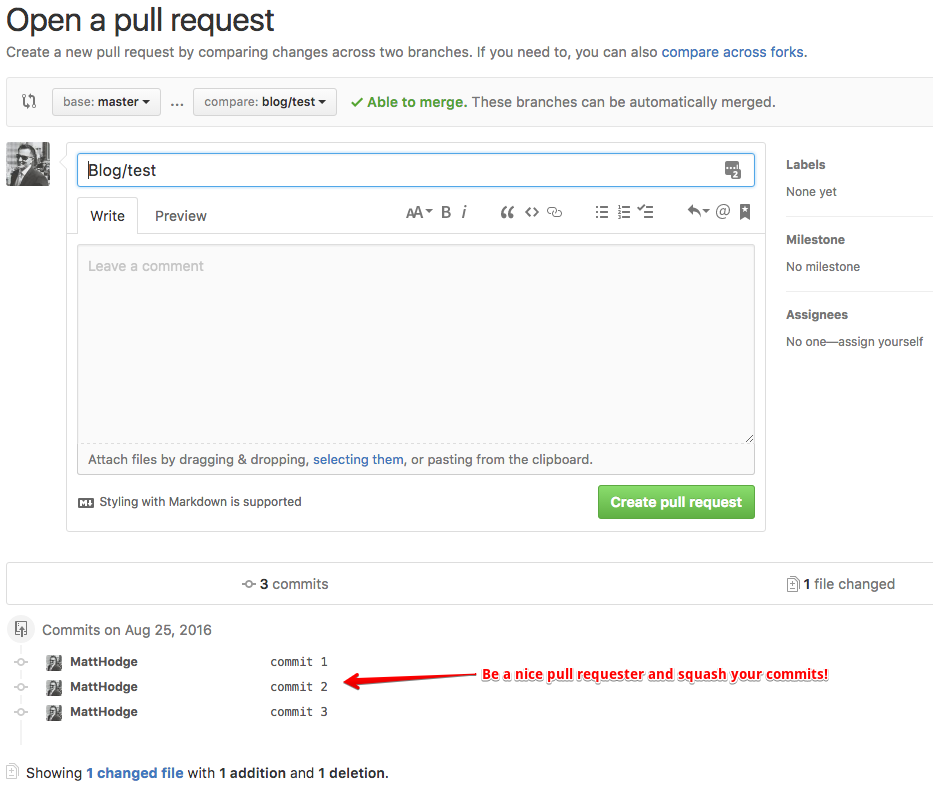
The easiest way to squash commits on Windows is to use the gitk tool.
Back over on our repository:
# run the gitk tool
gitkThese are the commits I want to squash:

I select the commit before I made the big mess, and choose Reset <branch> to here.
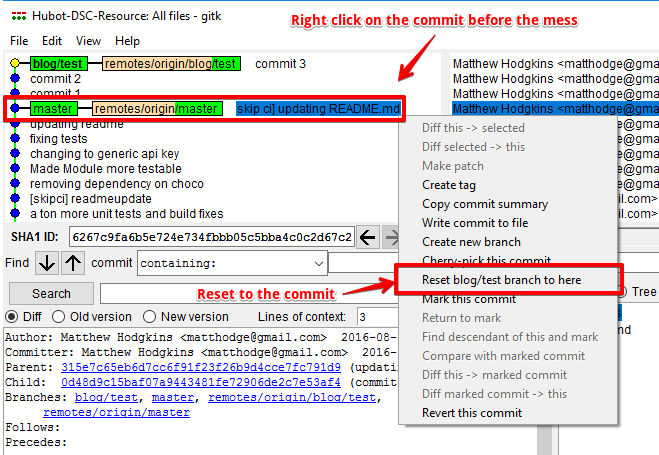
Choose Mixed: leave working tree untouched, reset index
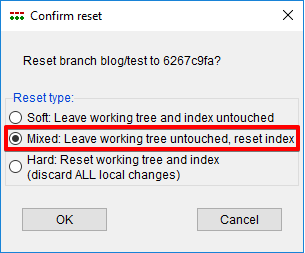
What this has done is reset your branch / repo to before the commits, but has left your changes untouched. We can now re-add the changes.
# see the state of the repo
git status
# add your changes back
git add .
# commit your changes
git commit -m "only one commit now!"
# git push with the --force switch
git push --forceYour commits will be squashed nicely now, and even if you had a pull request open, it will have been updated:

Thanks to Matt Wrock (@mwrock) for this tip!
Conclusion
With that, we have a pretty awesome looking PowerShell prompt and can work nicely with git repositories. We can even squash commits on Windows!

Enjoy Quake mode :)
